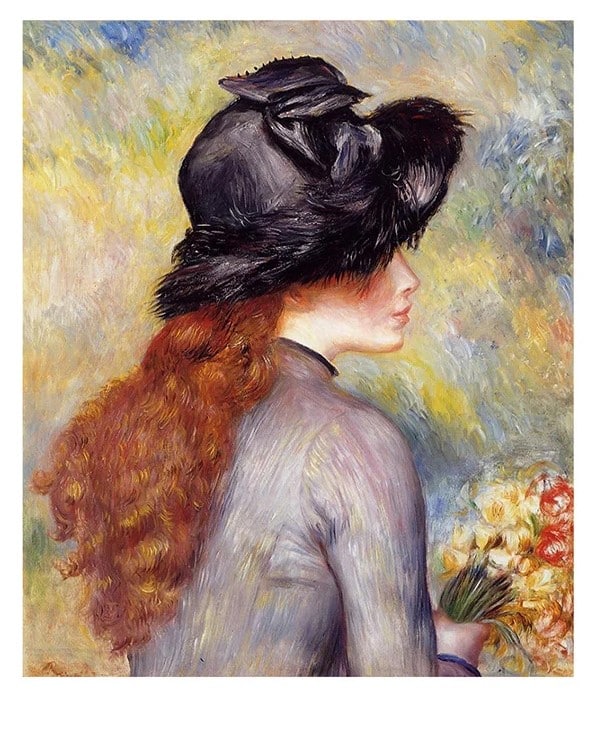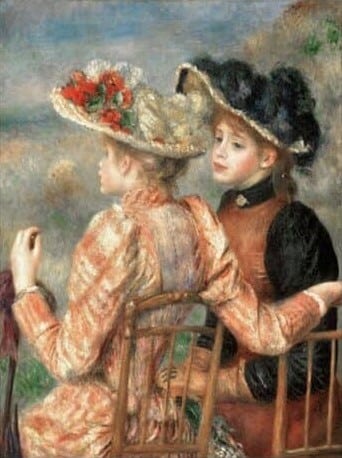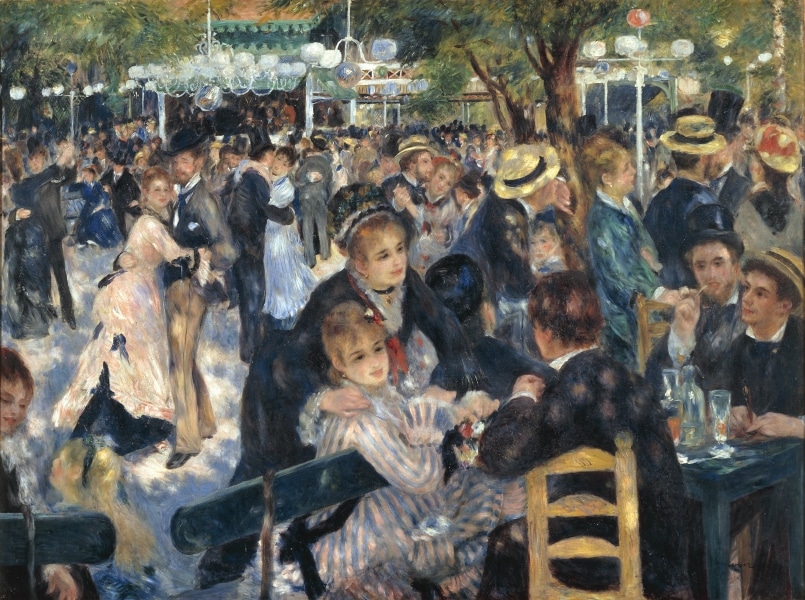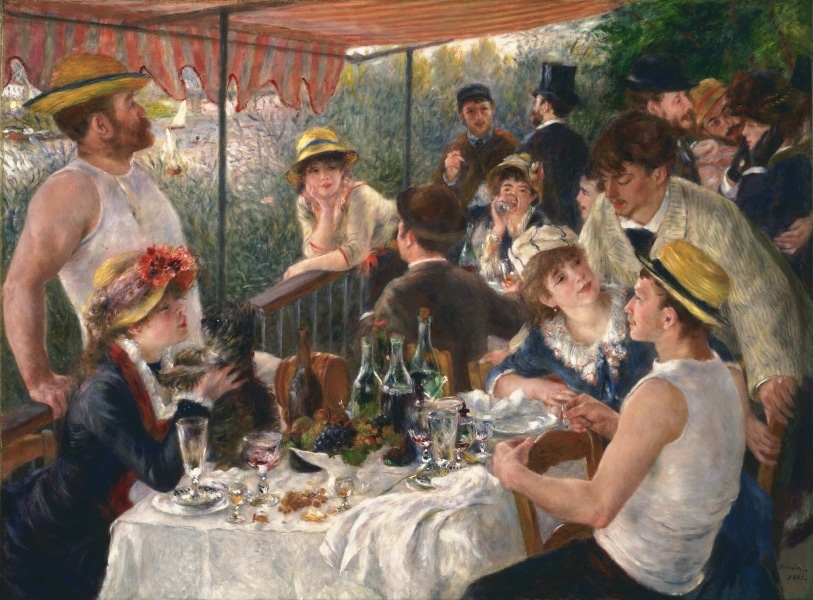Blog
Pierre-Auguste Renoir’s Masterpieces: A Journey Through Light and Color
Pierre-Auguste Renoir’s Masterpieces: A Journey Through Light and Color
Imagine standing in front of a Pierre-Auguste Renoir painting. The room around you fades away as the vibrant colors, the gentle brushstrokes, and the luminous quality of light transport you to a world that seems to dance with life.
Renoir, a master of Impressionism, had this uncanny ability to capture moments of joy, beauty, and naturalness in a way that feels almost magical.
His paintings aren’t just art; they’re an experience, a fleeting glimpse into the soul of the late 19th century France, filled with the laughter of children, the charm of Parisian streets, and the tranquility of gardens bathed in sunlight.
Renoir’s artwork, with its distinct softness and warmth, invites us to see the world through his eyes – eyes that found beauty in everyday life. Whether it’s the tender affection in “The Swing” or the vibrant, bustling scene of “Luncheon of the Boating Party,”

Renoir’s paintings are more than just visual delights. They are heartfelt celebrations of human connection and the simple pleasures of life. It’s as if Renoir whispers to us across the ages, urging us to pause and appreciate the world’s beauty around us.
But what sets Renoir apart in the crowded world of Impressionist art? It’s his unwavering commitment to capturing the essence of joy. While other artists of his time were focused on capturing the momentary effects of light or the nuances of urban life, Renoir delved deeper into the emotional landscape.
His scenes of leisure and gatherings are imbued with a sense of warmth and intimacy that is almost palpable. In a Renoir painting, every brushstroke conveys emotion, every color sings with happiness, and every scene tells a story of contentment and togetherness.
Renoir’s technique, characterized by loose brushwork and an extraordinary use of color, allows his paintings to glow from within. His portrayal of light and its effects on fabric, skin, and the
natural world is nothing short of revolutionary. It’s this mastery of light and color that makes his work so captivating, so alive. Each painting by Renoir is a testament to his belief that art should be “pleasant and cheerful.” In a world often overshadowed by hardship and turmoil, Renoir’s paintings stand as beacons of hope and joy.
However, to fully appreciate the genius of Renoir, one must look beyond the surface. Dive into the subtleties of his compositions, the way figures are arranged to lead the eye through the canvas, the playful interplay of light and shadow, and the harmonious balance of colors. Renoir was not just painting scenes; he was composing symphonies in color, creating visual poetry that resonates with a timeless quality.

The legacy of Pierre-Auguste Renoir goes beyond the boundaries of Impressionist art. He has inspired countless artists, brought beauty into the lives of many, and reminded us of the importance of finding joy in the mundane. In a Renoir painting, we find a celebration of life itself, a reminder to cherish the moments of happiness and connection that define our existence.
As we step back into the reality of our daily lives, let’s carry with us the essence of Renoir’s art.
Let it remind us to seek beauty in the ordinary, to appreciate the warmth of a shared smile, and to always find light in the shadows.
Renoir’s paintings are not just relics of a bygone era; they are timeless invitations to embrace the joy and beauty that surround us every day.
Pierre-Auguste Renoir was born in Limoges, Haute-Vienne, France, in 1841.
He was a leading painter in the development of the Impressionist style. As a celebrator of beauty and especially feminine sensuality, it has been said that “Renoir is the final representative of a tradition which runs directly from Rubens to Watteau.
One of the best-known Impressionist works is Renoir’s 1876 Dance at Le Moulin de la Galette (Bal du moulin de la Galette). The painting depicts an open-air scene, crowded with people at a popular dance garden on the Butte Montmartre close to where he lived. The works of his early maturity were typically Impressionist snapshots of real life, full of sparkling color and light.

More information about Pierre-Auguste Renoir can be found here on wikipedia

